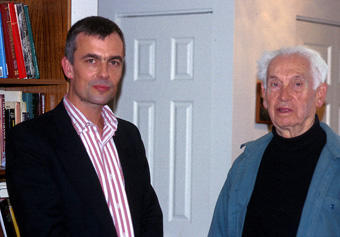Interest in hybridization and revised species concepts led to a fascination with why others in the past had got it so wrong (in my opinion). My own view of species became closer to Darwin's view of 1859 than to that of Ernst Mayr of 1954. Mayr's reproductive isolation concept had been generally prevalent when I started out as an evolutionary biologist in the late 1970s. Why did Mayr not understand Darwin's presentation? Can we do better now? Did the study of butterflies by Henry Walter Bates, Alfred Russel Wallace, E.B. Poulton, Karl Jordan and others have important effects on the understanding of species? How does our much improved understanding of genomics and genetics of adaptation change things now? These are some of the questions I have tried to answer using historical research.
See: Mallet, J. 2004. Poulton, Wallace and Jordan: how discoveries in Papilio butterflies initiated a new species concept 100 years ago. Systematics and Biodiversity 1:441-452.
Mallet, J. (2004). Species problem solved 100 years ago. Nature 430: 503.
Mallet, J. 2008. Mayr's view of Darwin: was Darwin wrong about speciation? Biological Journal of the Linnean Society 95:3-16.
Mallet, J. 2008. Wallace and the species concept of the early Darwinians. Pages 102-113 in C.R. Smith, and G. Beccaloni, eds. Natural Selection and Beyond: The Intellectual Legacy of Alfred Russell Wallace. Oxford, Oxford University Press.
Mallet, J. 2009. Alfred Russel Wallace and the Darwinian species concept: his paper on the swallowtail butterflies (Papilionidae) of 1865. Gayana 73:42-54.
Mallet, J. 2010. Why was Darwin's view of species rejected by 20th Century biologists? Biology and Philosophy 25:497-527.
Mallet, J. 2010. Group selection and the development of the biological species concept. Philosophical Transactions of the Royal Society B: Biological Sciences 365:1853-1863.
Mallet J. 2013. Darwin and species. In M Ruse, ed. The Cambridge Encyclopedia of Darwin and Evolutionary Thought. Cambridge University Press, Cambridge, 109-115.
The history of mimicry, with Henry Walter Bates, Alfred Russel Wallace, and Fritz Müller has provided a related focus of my research.
See: Joron, M. & Mallet, J. (1998). Diversity in mimicry: paradox or paradigm? Trends in Ecology and Evolution 13: 461-466.
Henry Walter Bates and mimicry
Fritz Müller’s "number-dependent" model of mimicry
More recently, I have been puzzled as to why ecological competition between species is generally seen, at least in textbooks, to be so very different in kind from the population genetics view of natural selection within species. They both depend on population growth rates of competing groups of organisms. In the Darwinian view of species there should be no hiatus at the species boundary, so natural selection and ecological competition should be part of the same regime.
I have suggested that one reason for the apparent difficulty with competition and selection may simply be a historical accident. I argue that it is due to the equation of the idea of "carrying capacity" with the equilibrium population density, K, in logistic and Lotka-Volterra models. This leads to confusion when Lotka-Volterra models are used to investigate natural selection in population genetic terms. The more natural r-α formulation of the logistic is more compatible with the understanding of natural selection than the more commonly used r-K model.
See: Mallet, J. 2012. The struggle for existence: how the notion of carrying capacity, K, obscures the links between demography, Darwinian evolution and speciation. Evolutionary Ecology Research 14:627-665. https://dash.harvard.edu/handle/1/30212075
See also: Portraits and quotations
